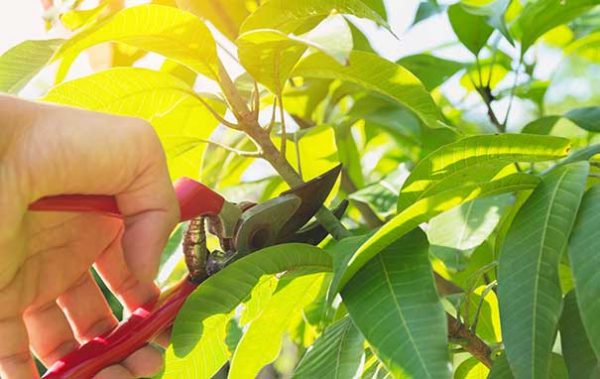
Pruning is one of those garden chores that if done right can pay dividends for the entire season. Good pruning and maintenance of your landscape trees and shrubs helps them grow strong and healthy during their growing season while allowing air and light to circulate through the plant. Despite the benefits of pruning, a little knowledge does go a long way. Certain types of plants should only be pruned at certain times of the year, while others respond to light or heavy pruning. Our list below will hopefully shed some light on some of the mysteries of pruning so that you can get the most gain out of your work.
When To Prune…
Needled Evergreen Plants:
These are best pruned in the spring just before or during their period of strong growth. These plants include:
- Hemlocks
- Yews
- Arborvitae
- Cypress
- Pine
- Spruce
- Junipers
Special Note: In the spring, spruce and pine trees produce “candle-growth” on which the new needles sprout. Pruning is best done when this growth is at about half of its normal length.
Early Spring-Blooming Plants
These plants set their flower buds in July/August. To prune them after this time is to cut off next year’s flowers. They are best pruned just after they bloom as they have just put out their new growth. These plants include:
- Azaleas
- Rhododendron
- Saucer Magnolia
- Forsythia
Summer Flowering Plants
These are best pruned in late winter to stimulate optimal growth which will result in a great flower show. These flowers include:
- Roses
- Crape Myrtle
- Hydrangea
- Althea
“Bleeding” Trees
Some Trees tend to “bleed” if they are pruned in late winter. While this is actually harmless, you may want to wait until early fall to avoid this situation. These trees include:
- Maples
- Birch
- Beech
How to Prune Winter-Damaged Plants
- Use Sharp Tools for Clean Cuts: Always use sharp pruning shears or a saw to avoid rough cuts that can invite pests and disease. Dull tools leave jagged scars that make plants vulnerable.
- Choose the Right Bud Direction: When pruning, cut just above a bud that faces the direction you want new growth to follow. This helps shape the plant as it regrows.
- Pruning Small Branches: Small branches are easily trimmed with pruning or lopping shears. Position the cutting blade on the side closest to the trunk for a clean, flush cut that heals quickly.
- Removing Large Limbs: For larger branches, use a two- or three-cut method to prevent bark tearing. Avoid leaving stubs, as they can slow healing. Make clean, precise cuts, and apply a pruning sealer if necessary to protect exposed areas.
- Shaping Hedges: For full, healthy hedges, shape them so that the base is wider than the top. This allows sunlight to reach lower branches, promoting even growth from top to bottom and reducing the risk of disease.
Get Help From Our Landscaping Experts
Meadows Farms landscaping team offers expert tree and shrub care including pruning services. With over 60 years in business, our team is happily serving residents in Virginia, West Virginia, Maryland, and the Washington D.C. Metro Area.

